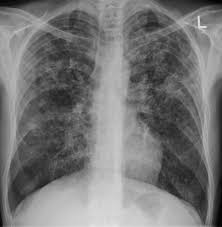Women face unique challenges when infected with TB
When it comes to tuberculosis (TB), men and boys bear the highest disease burden, accounting for 64% of all TB cases in 2020. But this single statistic does not capture the full impact of the disease.
TB, which is caused by bacteria that most often affect the lungs, is the second leading infectious killer after COVID-19. In 2020, an estimated 10 million people fell ill with TB worldwide, and 1.5 million people died from the disease. While men are nearly twice as likely to become infected with TB compared to women, women are more likely to face life-altering stigma for being TB-positive.
“Women need differentiated support,” Amrita Daftary, a social and behavioral global health researcher at York University in Toronto, told Global Citizen. “We’re at a stage where we know what the challenges are when it comes to women, stigma, and TB. We now have to move to action.”
Stigma around TB discourages people from seeking testing, treatment, and prevention services, which can then lead to a higher risk of severe outcomes. Even though anyone can be infected with TB, women are disproportionately impacted by TB-related stigma. This is partly because “it’s always easier to stigmatize people who are already marginalized,” Daftary said.
When women are stigmatized for having TB, they can experience rejection from the household, divorce, excommunication from children, job loss, name calling, and violence, according to Daftary, who has been studying TB-related stigma since 2004. Stigma manifests in less obvious ways as well, such as through lack of assistance or support by loved ones and a pressure to live with the disease in secrecy.
The health care system can also contribute to stigma by delivering messaging that triggers fear in women. Rather than hearing a story of recovery, women are told they are a vector of disease and that should stay away from others, including their own kids.
“It’s not to say that men or other groups of people don’t go through some of the same things, but the intensity and ease with which these stigmatizing acts are doled out is so much greater for women,” Daftary said.
In India, a TB infection can strip a woman of her central identity by ruining marriage prospects. In South Africa, where HIV-TB co-infection is prevalent, women infected with TB may face HIV-related stigma, such as being associated with promiscuous behavior.
The fear of being stigmatized can prevent individuals from seeking testing, treatment, and prevention services. But stigma, on top of existing gender inequalities, can also cause barriers to access to these services for women.
“Gender plays a pivotal role in access to health services and treatment, and TB is no different,” Phinah Kodisang, CEO of Soul City Institute of Social Justice, an intersectional feminist organization based in South Africa, told Global Citizen. “The lack of gender equality and equity exacerbates the hidden cases of women with TB.”
Women who are unemployed may be restricted from timely access to care due to financial limitations. Women may also face delayed diagnoses and slower service in health care settings due to increased stigma. Girls and women can be at higher risk of getting infected since they are typically tasked with caring for sick family members.
Kodisang also notes that, since young women are at higher risk for HIV infection than their male counterparts, they also face higher risk of active TB infection in countries where HIV burden is high.
Over the last decade, the fight against TB has made strides in considering and identifying gender dynamics. But programs that address TB continue to use a standardized approach — everyone receives the same treatment or drug, and are monitored in the same way. The issue is: “We’re heterogeneous and we need differentiated support,” according to Daftary.
Integrating TB services with other reproductive, maternal, and child health services can make it easier for women to access care. Training health care workers to move away from a narrative of blame and toward messages of curability and recovery can relieve stigma that primarily targets women. Education around practical issues like how to talk to your family about TB and how to deal with potential side effects that could invite stigma could provide another important opportunity for progress.
But more funding is needed to address TB-related stigma and to pursue differentiated approaches. The COVID-19 pandemic has diverted resources away from the fight against TB. Now, the money going toward the global TB response is only half of what’s needed, according to the Stop TB Partnership.
The Global Fund to Fight AIDS, TB, and Malaria will hold its seventh replenishment later this month. It will be an opportunity for countries to reinvest in TB and get the world back on track to ending this pandemic.
But addressing stigma will require more than financial support from donors.
“Frankly, stigma is not even on the table right now,” Daftary said. “The number one priority is don’t spread it. The number two priority is cure the patient. But if you can normalize TB, people will go get tested, go to health facilities, and take their treatment.”
Source: Global Citizen











